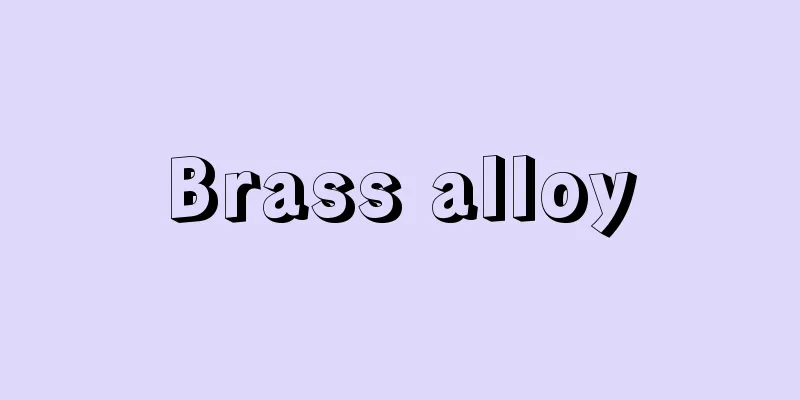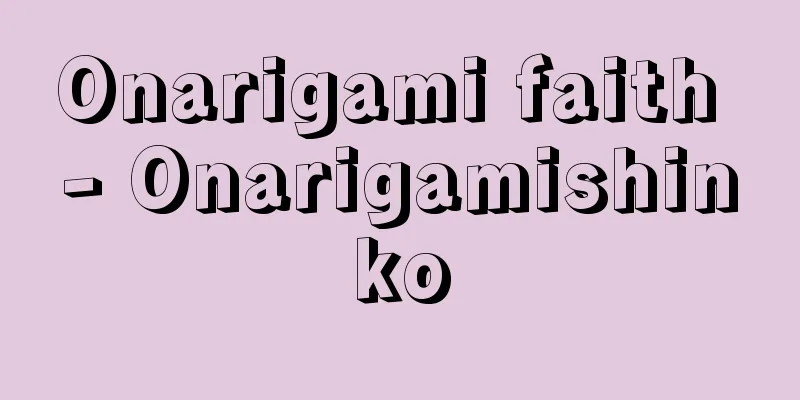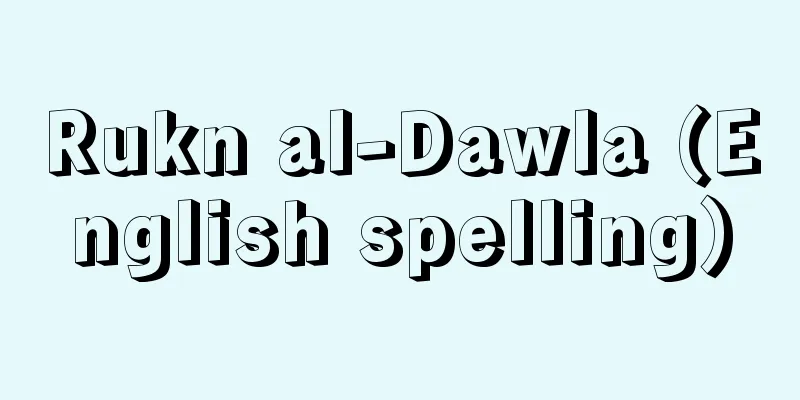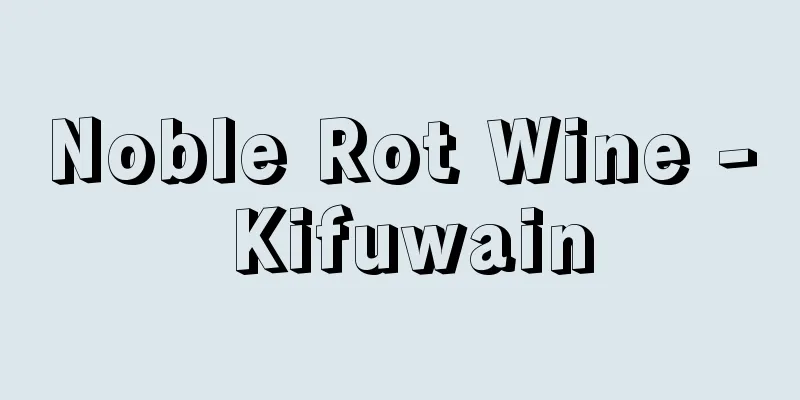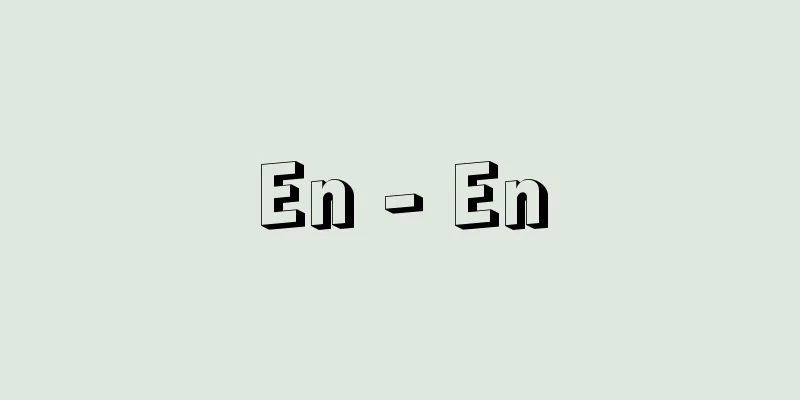Mongolian script
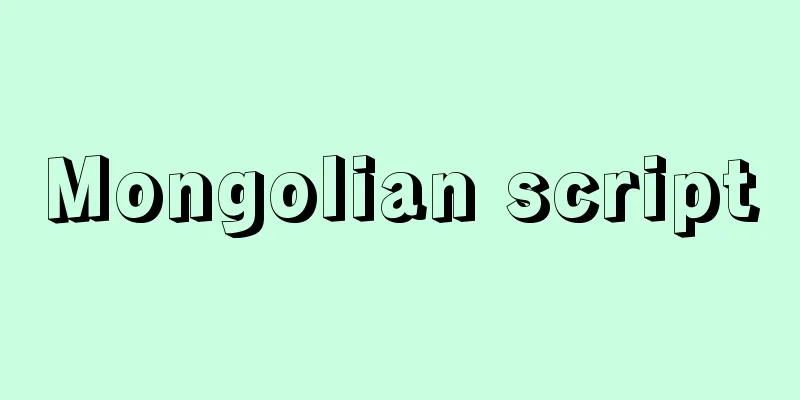
|
A Uighur-based phonetic script used to write Mongolian (Mongolian). It is written vertically, from left to right. In the 13th century, the Mongols borrowed the Uighur script to write their own language, but in the 14th century, during the reign of Emperor Wuzong of the Yuan Dynasty (Haishanhan, reigned 1307-11), the Mongolian script was created, which was modified and supplemented to suit the characteristics of the Mongolian language. After several revisions, it became almost the same as the current Mongolian script in the 17th century, and then, as translations of Buddhist scriptures became popular, the Galic script was created to write Sanskrit and Tibetan. There are many inscriptions, documents, and Buddhist scriptures written in Mongolian. Since the 1940s, Mongolia has abandoned the Mongolian script and adopted the Cyrillic script, but the Mongolian script, which consists of five vowels and 23 consonants, is still used in the Inner Mongolia Autonomous Region of China. Each word is written consecutively, and the character shape varies depending on the position at the beginning, middle, or end of the word. This script has some shortcomings, such as not being able to separate the two opposing phonemes such as u and o, ü and ö, not being able to write horizontally, making it difficult to insert roman letters, and not being suitable for writing scientific books. In 1648, Todo script was created as an improvement on Mongolian script based on the Oirat dialect. The number of vowels and consonants increased to 7 and 24, and it is still used today by the Oirat people in the Xinjiang Uighur Autonomous Region of China, the Kalmyks in the Russian Federation, and the Mongolians in the Qinghai region of China. In Mongolia, there was a movement to revive the Mongolian script from the late 1980s, and the new government elected in the first free election in 1990 decided to make Mongolian the official script. The plan was to switch completely to the Mongolian script after a period of using both the Cyrillic and Mongolian scripts together, but in 1994 the Mongolian parliament decided to keep the Cyrillic script as the official language for the time being, and the Mongolian script was relegated to the status of a semi-official language. [Tatsuo Nishida] [References] | |Source: Shogakukan Encyclopedia Nipponica About Encyclopedia Nipponica Information | Legend |
|
モンゴル(蒙古(もうこ))語の表記に使われるウイグル系表音文字。縦書きで左行から右行に移る。モンゴル人は、13世紀には、ウイグル字形を借りて自国語を表記していたが、14世紀、元の武宗(海山汗(ハイシャンハン)、在位1307~11)の時代になって、モンゴル語の性格にあわせて修正補充したモンゴル文字が誕生する。数回の改正を経て、17世紀にほぼ現行のモンゴル文字と同じようになり、その後仏典の翻訳が盛んになって、もっぱら梵(ぼん)語とチベット語を表記するためのガリックGalic文字がつくられた。モンゴル文字で書かれた碑文、文書、仏典が多量に残っている。1940年代以降、モンゴル国では、このモンゴル文字を廃して、キリル文字を採用してきたが、中国の内モンゴル自治区では、いまもなお母音字5種、子音字23種からなるモンゴル文字が使われている。単語ごとに続けて書き、字形は語頭、語中、語末の位置によって違った形をもつ。この文字には、uとo、üとöなどの対立した二つの音素を表記分けしないとか、横書きができないためローマ字の挿入がむずかしく、科学書の表記に適さないなどの欠点がある。1648年、オイラート方言を基にして、モンゴル文字を改良したトド文字がつくられた。母音字は7種に、子音字は24種に増加し、現在なお、中国の新疆(しんきょう)ウイグル自治区のオイラート人、ロシア連邦のカルムイク人や、中国の青海地域一帯のモンゴル人に用いられている。モンゴル国でも、1980年代末からモンゴル文字復活の動きが起こり、1990年最初の自由選挙で選ばれた新政府が、モンゴル文字を公用文字とする決定をした。キリル文字との併用期間を経て完全にモンゴル文字に切り替えることになっていたが、94年モンゴル国会は、当面、キリル文字を公用語とするとし、モンゴル文字は準公用語の地位に後退した。 [西田龍雄] [参照項目] | |出典 小学館 日本大百科全書(ニッポニカ)日本大百科全書(ニッポニカ)について 情報 | 凡例 |
<<: Mongoloid Great Race - Mongoloid Great Race
>>: Montgolfier Brothers - Frères Montgolfier
Recommend
Alexander
A sweet cocktail based on brandy. Place 30ml of br...
Rhodanic acid
...A compound with the structure H-S-C≡N. Also ca...
Marks, H.
…In Japan, the Electricity Memorial Day on March ...
Molten Fire
…The colored leaves are bright red or orange-yell...
Gas buoyancy balance
...For precise measurements, it is necessary to c...
Angle ruler
A ruler used to measure angles. The simplest tool...
Rat snake
… It is commonly found in forests, grasslands, cu...
Perekopsky peresheek
An isthmus in southern Ukraine that connects the C...
Mi Wan-zhong (English spelling)
[raw]? [Died] Sutei 1 (1628) Chinese painter and c...
Vangā (English spelling) Vanga
...Tropical cyclones, which occur in the northern...
Cold eggs - Kantamago
〘Noun〙 Eggs laid by chickens in the cold. They con...
Discoid lupus erythematosus - I'm Ebanjo Eri Temato
…The disease is called lupus erythematosus becaus...
Echizen Pottery Village
...Blessed with clay, the area is known as a prod...
Autumn Land Survey - Akikenchi
In addition to the regular land surveys, there we...
Miyamashikimi - Miyamashikimi
An evergreen shrub of the Rutaceae family (APG cl...
